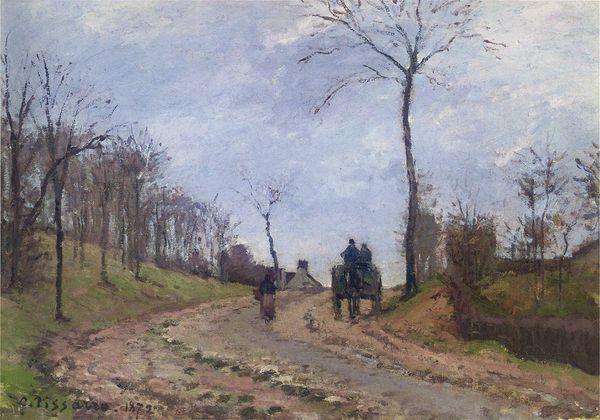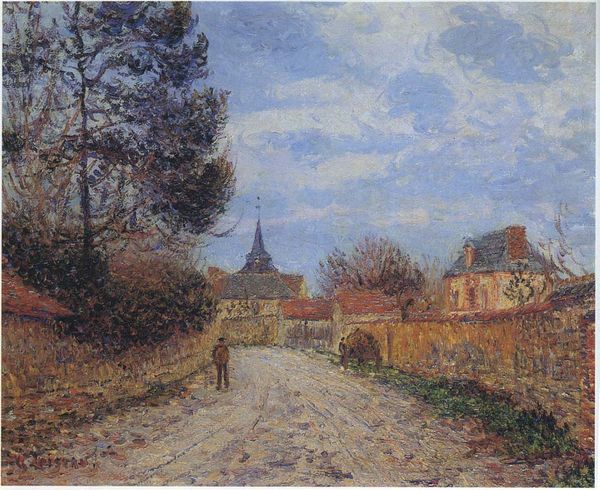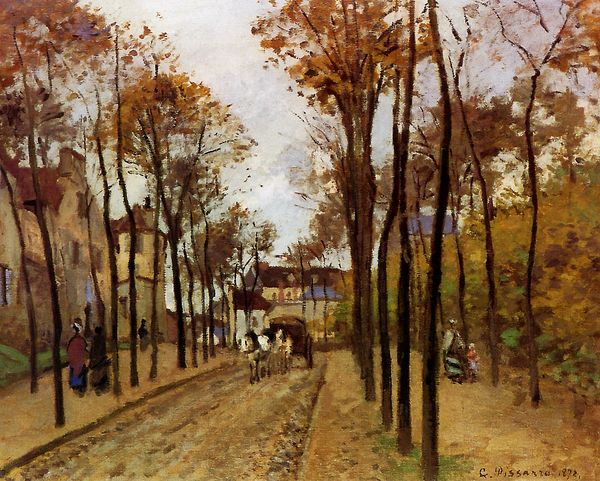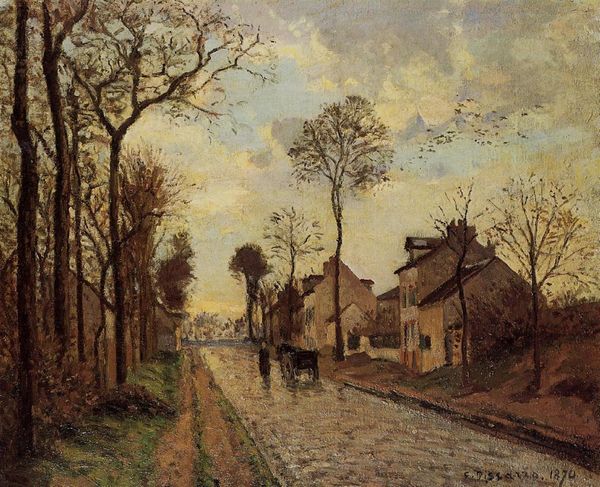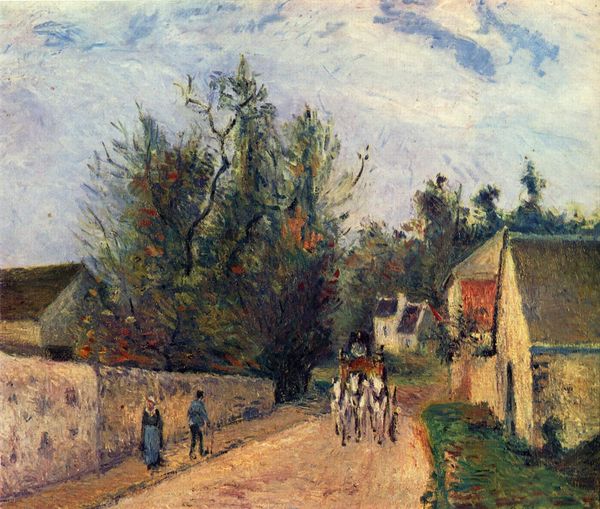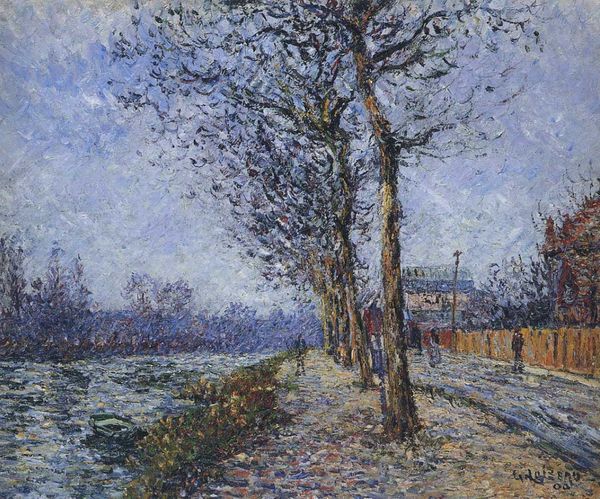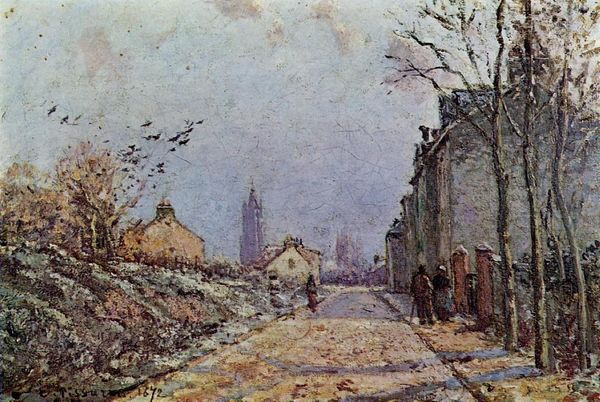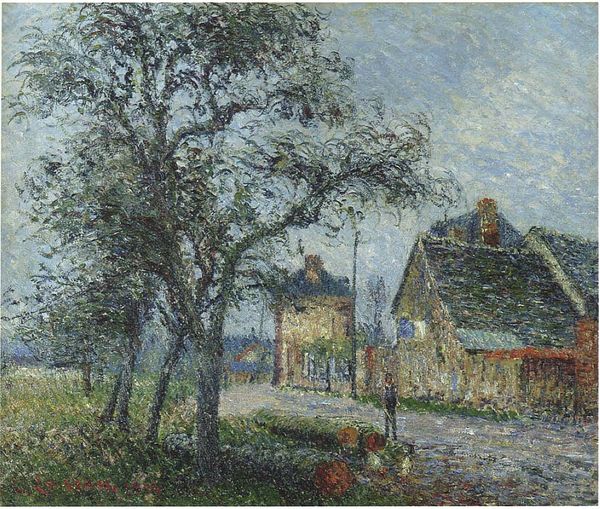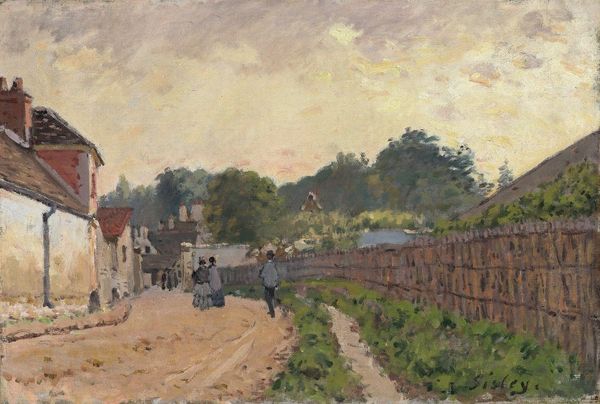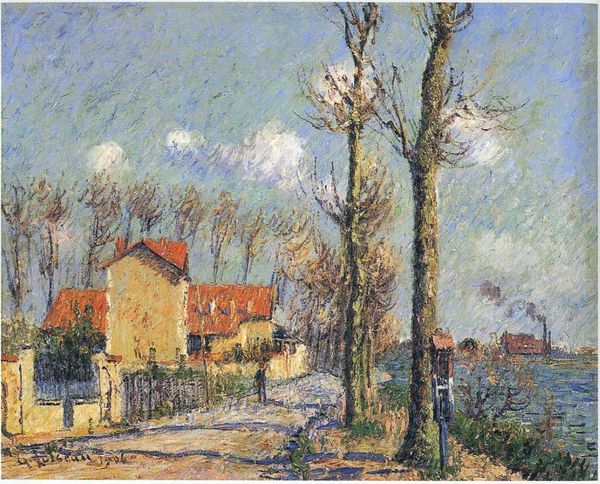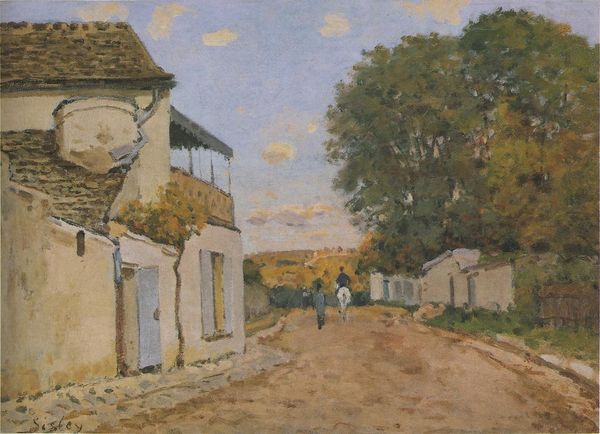
Copyright: Public domain
Camille Pissarro made this painting of a stagecoach in Louveciennes using oil on canvas in 1870. The thick application of paint, visible across the entire surface, immediately suggests that the materiality of this work is key to understanding it. Look closely, and you can see how Pissarro used short, broken brushstrokes to capture the fleeting effects of light and atmosphere on a rainy day. This focus on surface texture elevates the material presence of the painting. The way he applies paint gives the impression of labor. It is clear that Pissarro actively manipulated the oil paint and applied it to the canvas in a manner that mirrored his perceptions of the natural world. By emphasizing process, Pissarro elevates the status of painting as a craft, blurring the boundaries between representation and material expression. The stagecoach itself signifies human labor and the growing industrialization of transport. This all serves to highlight the amount of human effort involved in even the simplest everyday tasks. Ultimately, this work underscores the importance of considering the materiality and making of art, and the wider social issues of labor, politics, and consumption.
Comments
No comments
Be the first to comment and join the conversation on the ultimate creative platform.

